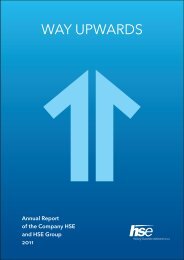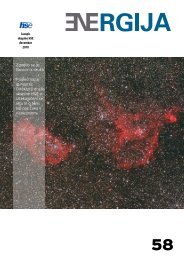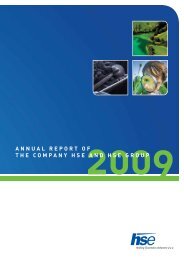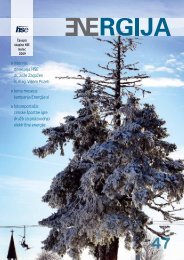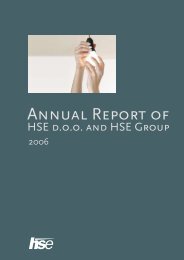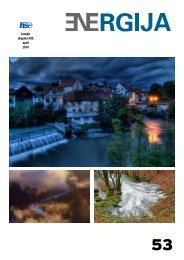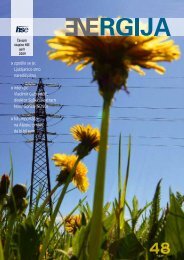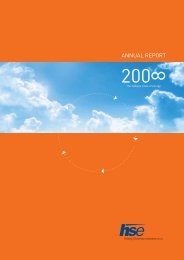Annual report - HSE
Annual report - HSE
Annual report - HSE
You also want an ePaper? Increase the reach of your titles
YUMPU automatically turns print PDFs into web optimized ePapers that Google loves.
4.5.7.2 Property, plant and equipment<br />
Property, plant and equipment are long-term assets owned by the company and used for<br />
the performance of its registered activities. Property, plant and equipment comprise land,<br />
buildings, production equipment, other equipment and assets in the course of construction.<br />
Property, plant and equipment (hereinafter: “operating fixed assets”) are disclosed at cost<br />
less accumulated depreciation. Cost includes costs that can be directly attributed to the<br />
acquisition of an item of property, plant and equipment. The parts of items of plant and<br />
equipment with different useful lives are accounted for as individual assets. Borrowing<br />
costs that are directly allocated to the purchase, construction or production of a qualifying<br />
asset, i.e. until the capitalisation of an asset, are recognised as a part of cost of such an<br />
asset. The company did not obtain any loans for purchase of fixed assets. Accordingly,<br />
the costs of borrowing are not attributed to the assets in the process of construction or<br />
production.<br />
For later measurement of property, plant and equipment the cost model is used.<br />
The company has no fixed assets, for which it would record the residual value when<br />
purchased.<br />
Depreciation is calculated using the straight-line depreciation method, taking into account<br />
the useful life of individual (integral) part of a fixed asset. Depreciation begins to be<br />
calculated from the cost when an asset is available for use.<br />
Assets in the course of construction or production are not depreciated.<br />
Individual items of property, plant and equipment have the following useful lives:<br />
Property, plant and equipment Amortisation rate (%) Useful life in years<br />
Buildings 2% 50<br />
Production equipment 4% 25<br />
Computer equipment 20-50% 2-5<br />
Furniture 10-25% 4-10<br />
Small tools 25-33.33% 3-4<br />
Cars 20% 5<br />
Other plants and equipment 10-33.33% 3-10<br />
Depreciation methods, useful life and other values of groups of assets are examined at<br />
the end of each financial year and adapted if needed. In case useful life is extended, the<br />
company decreases accrued depreciation costs in the discussed financial year, while in<br />
case the useful life is shortened, it increases them. The adjustment of useful life has to be<br />
calculated in a manner that the asset will be depreciated in the new predicted useful life.<br />
The change in useful life is considered as a change in accounting estimate and it affects<br />
solely the period in which the accounting estimate was changed and every following<br />
period of the remaining useful life.<br />
The costs of replacement a part of fixed asset are attributed to the carrying amount of this<br />
asset in case it is possible that future economic benefits related to a part of this asset will<br />
flow to the company and if costs can be reliably measured. All other costs (e.g. regular<br />
maintenance) are recognised in profit or loss as expenses as soon as they are incurred.<br />
<strong>Annual</strong> Report <strong>HSE</strong> 2012<br />
4 Financial Report of the company <strong>HSE</strong><br />
120<br />
Gains and losses that occur upon disposal of property, plant and equipment are recognised<br />
as a difference between the net sales value and carrying amount of a disposed asset and<br />
are recognised among other operating revenue or write-downs in value.



